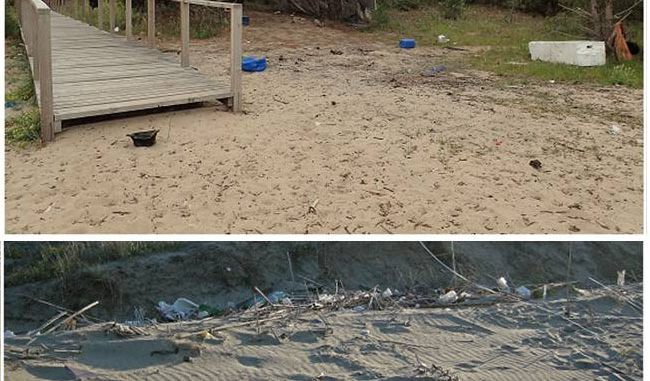
Beach litter is an increasingly important threat, causing a drastic loss of natural biodiversity and the associated ecosystem services. Even if beach litter accumulation in oceanic coasts has been analyzed quite well, new research efforts are still necessary to better understand this phenomenon along the Mediterranean coasts. This work sets out to analyze the sources of beach litter, the type of material, and the distribution and accumulation trend along the sandy coasts of the Adriatic Sea in central Italy (Abruzzo and Molise Regions, Italy). In particular, we focus on the following questions: (i) Which are the most frequent beach litter items and materials on sandy coasts? (ii) How is beach litter distributed on the different coastal dune habitats along the sea–inland gradient? Data were collected and categorized during spring 2014–2015 following the OSPAR guidelines in belts parallel to the shoreline and in transects perpendicular to the shoreline. Before analyzing litter abundance by classes of material, source types, and floating capacity, the spatial trends of waste accumulation along the dune zonation was also explored. Most of litter elements are in plastic, followed by styrofoam with good floating capacity. Majority of the debris derive from food packaging, fishing and recreational activities. The distribution of litter along the sea–land eco-morphological gradient is heterogeneous. The unequal accumulation amounts of debris on the upper beach, embryodunes, mobile dunes and fixed dunes threaten natural EC habitats in different ways. Our results stress the need of specific conservation and cleaning actions able to preserve the ecological value of EC coastal dune habitats.
http://link-springer-com-443.webvpn.jxutcm.edu.cn/article/10.1007/s12210-018-0740-5
De Francesco M.C., Carranza M.L., Stanisci A. 2018. Beach litter in Mediterranean coastal dunes. An insight on the Adriatic coast in Central Italy. Rendiconti Lincei. DOI: 10.1007/s12210-018-0740-5

Commenta per primo